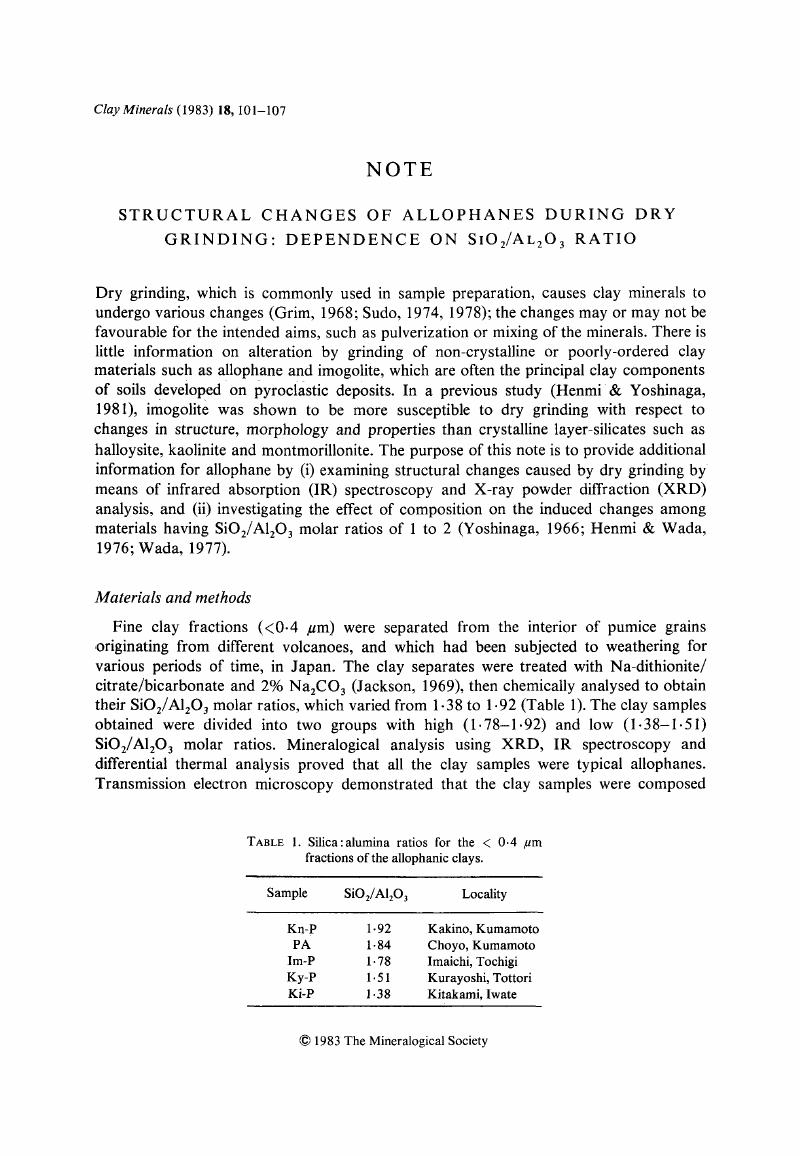Crossref Citations
This article has been cited by the following publications. This list is generated based on data provided by Crossref.
Henmi, T.
and
Huang, P.M.
1985.
Removal of phosphorus by poorly ordered clays as influenced by heating and grinding.
Applied Clay Science,
Vol. 1,
Issue. 1-2,
p.
133.
Hayashi, Hisato
and
Yamada, Masaharu
1990.
Kinetics of Dissolution of Noncrystalline Oxides and Crystalline Clay Minerals in a Basic Tiron Solution.
Clays and Clay Minerals,
Vol. 38,
Issue. 3,
p.
308.
Yoshida, Mio
1992.
Effects of dry grinding on P retention properties of andosols.
Soil Science and Plant Nutrition,
Vol. 38,
Issue. 4,
p.
637.
Ozeki, Sumio
Masuda, Yuichi
Nishimoto, Yuko
and
Henmi, Teruo
1994.
Characterization of Porous Solids III.
Vol. 87,
Issue. ,
p.
179.
Breen, C.
Illés, J.
Yarwood, J.
and
Skuse, D.R.
2007.
Variable temperature diffuse reflectance infrared Fourier transform spectroscopic investigation of the effect of ball milling on the water sorbed to kaolin.
Vibrational Spectroscopy,
Vol. 43,
Issue. 2,
p.
366.
Khan, Hamayoon
., Naoto Matsue
and
., Teruo Henmi
2007.
Adsorption of Water on Nano-Ball Allophane as Affected by Dry Grinding.
International Journal of Soil Science,
Vol. 2,
Issue. 4,
p.
247.
Lenhardt, Katharina R.
Breitzke, Hergen
Buntkowsky, Gerd
Reimhult, Erik
Willinger, Max
and
Rennert, Thilo
2021.
Synthesis of short-range ordered aluminosilicates at ambient conditions.
Scientific Reports,
Vol. 11,
Issue. 1,



